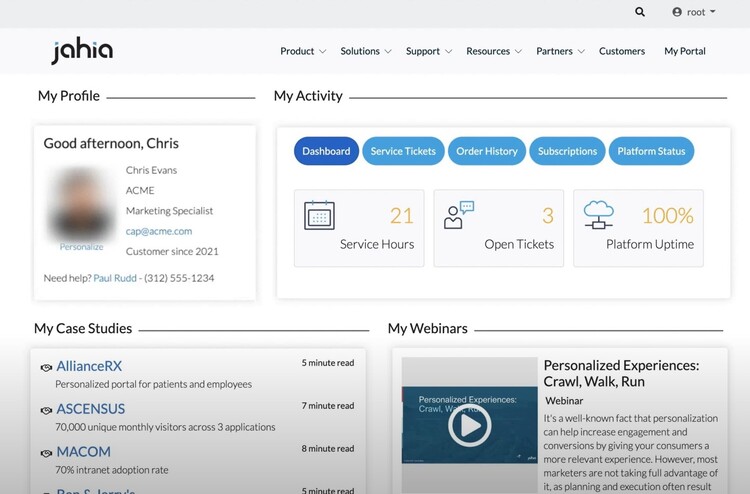The (High) Costs of DXP Suites

Ever bought a used car?
It’s a daunting task. You set aside a budget, pick a model or two that you really like, then bargain hunt for the best deal that gets you something without too much wear on the tires. When you finally get that car you want at the price you want, there’s a wave of euphoria that washes over every fiber of your being as you sign the paperwork and drive it off the lot.
This lasts right up until that first unforeseen issue rears its ugly head. If you’re lucky, it’s just a dead battery. You’re rarely lucky.
There’s a similar process to buying a Digital Experience Platform, or DXP. Your team sets aside a budget, you pick out a few solutions that you really like, and ultimately you choose the one that most benefits your organization. But then, like with a used car, some unforeseen issues start to creep up, most of which demand a little more out of your corporate pocketbook. This happens as soon as the implementation process starts in earnest.
During implementation, an organization takes a DXP and fits it into their existing systems, turning it into an interlinked, cohesive part of their marketing technologies. This can be done wholesale – via suites – or through best-of-breed technologies to create a “stack.”
There’s benefits and costs to each. Today, however, we’re just going to focus on the costs. Because, like with a used car, there’s the initial investment…and then there’s all the stuff you don’t think about until the check engine light turns on.
Initial Investment
This is going to be where you spend the bulk of your cash. However, it helps to know the difference between how much you’re typically spending for a stack versus a suite.
Stack
The initial investment of a martech stack is split between the various technologies that you’re using. Vendor A might provide the CMS, CDP, and/or DXP (like Jahia), while Vendor B might provide the CRM and Vendor C provides the marketing automation. Since these technologies are all from different organizations, you’ll need to negotiate prices with each separately, and don’t expect a bulk discount unless the vendors have a strong partnered relationship.
Conventional wisdom would have you assume it would cost an arm and a leg to get divergent technologies from different vendors to all work together. However, with the advent of cloud platforms and low-to-no code connectivity, bridging these technologies can be simple and quite cost-effective. Some DXPs, including our own, do a great job acting as the “hub” for all of this.
Suite
The biggest benefit of a suite purchase is that you get everything from the same vendor. One big contract, free of any worry that the technologies won’t play nicely with each other. It’s fast, easy, and seemingly leaves little to the imagination. Plus, most of the initial packages are designed to be customer-friendly and come with more features than what you can get from smaller stack providers.
Here’s the thing though – these “customer-friendly” contracts aren’t actually all that friendly at all. Sure, the initial costs are lower compared to a stack solution, but let’s go over all the issues that might pop up if you dig a little deeper:
- The pricing structure can often be obtuse and hard to parse. Which can ultimately lead to you paying hidden costs down the line that you didn’t know you agreed to
- These “all-in-one” suites are often built via acquisition – that means the technologies are no more natively integrated than a stack solution
- Many of the solutions of a suite can often have overlapping capabilities, so you’ll essentially be paying multiple times for the same thing
- Suites are built to give you a pre-built solution that they think you need, rather than one you actually want. So even though you’re getting a nice, shiny system that can do a million different things, if you’re only planning to use a small fraction of its functionality you’re essentially paying a lot of extra money for nothing.
However, none of these cover the most pressing cost associated with a suite – once purchased, you’re stuck with them. Find another great technology that you think could really benefit your organization? Unless the suite specifically connects to them, you’re probably not going to be able to bring it into your system…not without a significant cost, both financial and mental (seriously – integrations are draining).
The Added Costs
How ready are you for that maintenance light to go on? Because you might not necessarily like what you see when you pop open the hood.
Stack
Like anything else, stacks have some inherent costs that often come in after-the-fact.
Depending on how old the technologies are that you have in place, and how regularly you have been updating them, bringing a stack in could necessitate replacing a lot of these legacy systems as they just won’t connect well with modern DXPs. On top of this, stacks by necessity are build-as-you-go, so while you might not be bringing in everything your organization will ever need at the outset, you will eventually need to pay up when it comes time to buy into those additional technologies.
However, with enough planning ahead, you can offset a lot of these issues or at least prepare yourself in advance. Not so much with suites.
Suite
Remember how we mentioned that you’re buying into the ecosystem? Well, you’ve basically become a customer in their monopoly market. And like most monopolies, it is far from customer-first.
Enticing start-up costs for your suite DXP can quickly balloon as you decide you need to make alterations to that original plan. Need to add capacity because your traffic starts to jump quicker than expected? What about adding detailed analytics? It’ll all cost you, and you have only one vendor to work with. A vendor that knows exactly how expensive it would be for you to replace their system with something else.
This isn’t even mentioning the integration process for suites, which are often far more complex than the modular simplicity of stacks and thus take much longer to integrate. Plus, since a suite’s technology is typically built on proprietary engines and software, you typically face a very select pool of expensive integration specialists that can help you with the process and support afterwards. More often than not, you’ll have to go right back to the suite and ask for their assistance.
Oh, and those support services? Unless you’re a top-tier, high spending client, you won’t be a priority concern for them if anything goes wrong. That means you’ll be getting subpar, impersonal support and still paying through the nose for the privilege.
This is just scratching the surface. There’s a reason, after all, that only 29% of marketers now prefer suites over stacks.
Talk To Us!
At the end of the day, the best way to find out the hidden costs behind your DXP before you take the plunge is to have an open and honest discussion with vendors and let them know about any concerns you have prior to diving deep into the process.
Whether you’re in the process of buying a DXP or just on the hunt for more information, we’re always eager and willing to talk. Contact Us and we can set up some time to chat.


